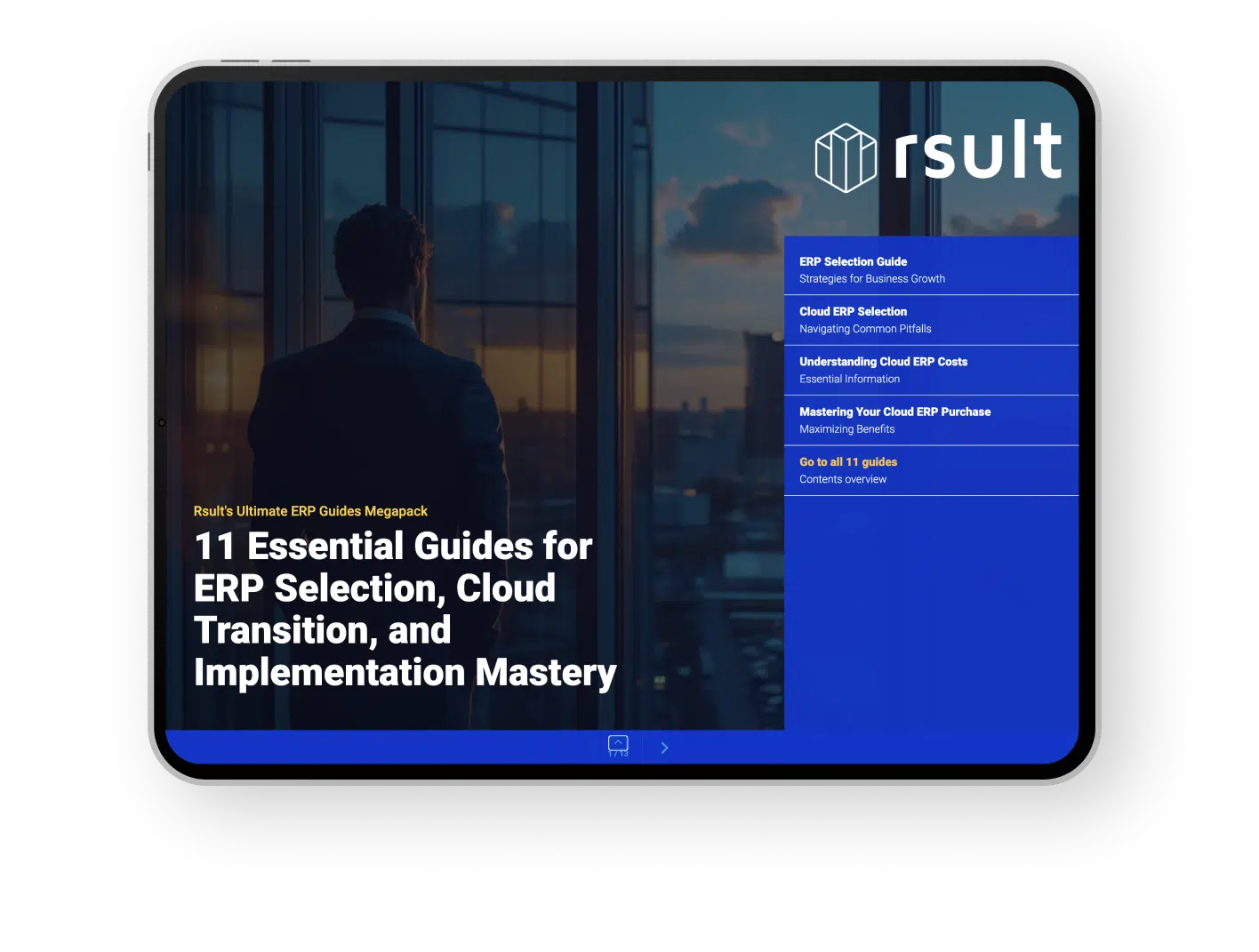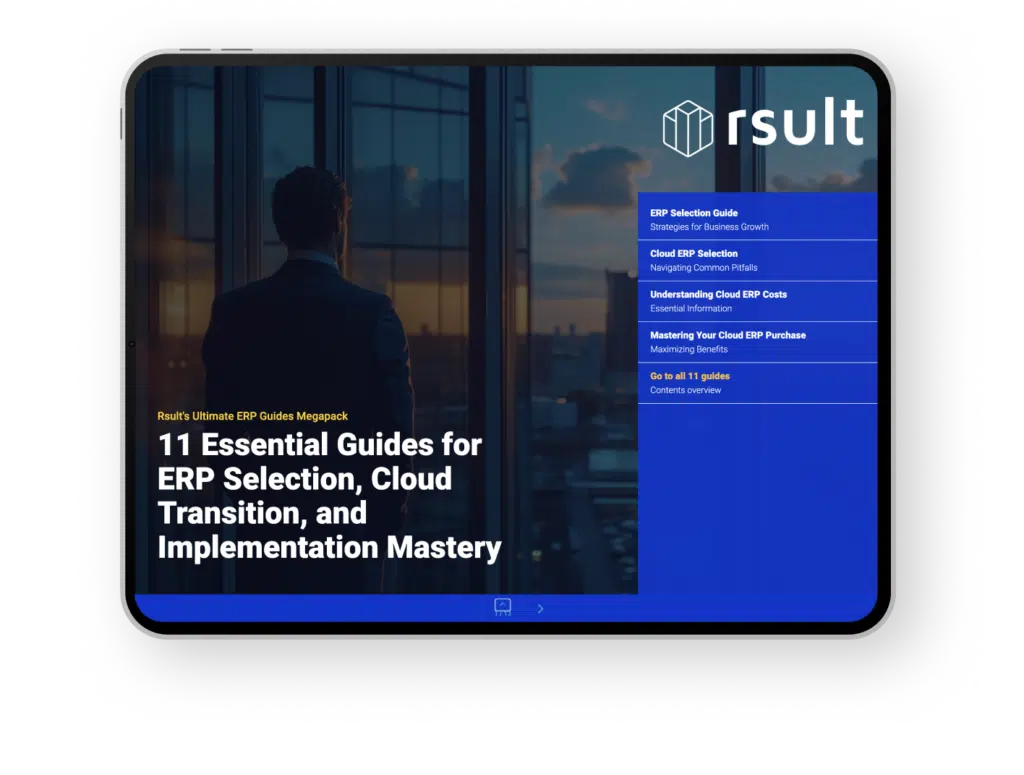When it comes to streamlining and supporting business operations, an astute ERP selection can make all the difference. Embarking on the ERP implementation process is a transformative journey for any company, large or small. Understanding how to choose ERP system hinges on a business’s unique needs, thorough ERP software comparison, and the desire to integrate the best ERP solutions into their infrastructural fabric. An ERP system serves as the technological spine, bolstering efficiency and inter-departmental collaboration, paving the way for sustained growth and success.
Forging ahead without the right ERP system is like navigating without a compass. Companies aiming to excel must invest time and effort into meticulously sifting through options, engaging with stakeholders to uncover detailed needs, and mapping out an ERP selection strategy that aligns with their long-term vision.
Key Takeaways:
- ERP selection is a foundational step for enhancing business efficiency.
- Engaging stakeholders from the start is crucial for a successful ERP implementation process.
- Analysis of current and future business needs guides the ERP software comparison.
- Choosing the right ERP system directly impacts data centralization and decision-making quality.
- Ensuring the ERP solution scales with your business growth is paramount.
- Methodical planning leads to selecting the best ERP solutions for specific business objectives.
Understanding the Role of ERP in Modern Business Operations
As today’s business landscape continues to evolve, an Enterprise Resource Planning (ERP) system becomes less of an option and more of an imperative. These dynamic systems are the lifeblood of modern enterprise operations, fueling business processes with efficiency and synergy. Whether it’s for streamlining workflows, managing finances, or orchestrating cross-departmental activities, an ERP’s influence can be felt across the breadth and depth of an organization.
The Evolution from Material Resource Planning to Comprehensive ERP
The journey from simple material resource planning to today’s sophisticated ERP systems is a testament to technological progression in the business world. Initially focused on manufacturing and inventory management, ERPs have grown to encompass a wide array of business functions, responding to the need for integrated and intelligent management solutions.
Key Business Functions Enhanced by ERP Software
Without question, the adhesive that binds various segments of a company together is often its ERP system. From finance and sales to customer service and inventory operations, an ERP harmonizes these facets into a cohesive whole. ERP vendor selection plays a pivotal role in how these functions are enhanced and must thus be approached with diligence and foresight.
Strategic Impact of ERP on Efficiency and Cross-Departmental Coordination
An ERP’s strategic impact lies in its ability to improve efficiency and cross-departmental coordination, effectively reducing redundancies and enhancing communication. By serving as the central nervous system of an enterprise, it paves the way for informed decision-making and cohesive business practices, which stands at the core of a successful ERP system evaluation.
Given its importance, coming to grips with an accurate ERP requirements checklist is vital. This checklist must address the ERP’s ability to function well alongside existing processes, while also being scalable enough to support future growth. Such a tool is instrumental for businesses to ascertain their operational needs and find an ERP solution that fits like a glove.
| ERP Module | Function | Strategic benefit |
|---|---|---|
| Finance | Streamlines accounting and financial reporting | Enhances fiscal control and regulatory compliance |
| Sales | Manages customer relationships and sales pipelines | Drives revenue growth through better sales strategy |
| Customer Service | Coordinates support activities and tracks engagements | Builds customer loyalty and improves satisfaction |
| Inventory Operations | Optimizes stock levels and reduces holding costs | Increases efficiency and reduces waste in supply chain |
| Manufacturing | Automates production scheduling and resource utilization | Maximizes throughput and minimizes downtime |
In summary, ERP systems are not just about technology; they are about aligning a company’s strategic vision with its day-to-day operations. A meticulous ERP vendor selection and ERP system evaluation, powered by a detailed ERP requirements checklist, will ensure that a business is equipped with the right tools to advance, outperform, and outlast in a competitive market landscape.
Mapping Out Your Business Processes for ERP Selection
Before unveiling the curtain to witness the capabilities of an ERP software demo, it’s essential to have a detailed understanding of your own business processes. This foresight is the cornerstone to a successful ERP system evaluation, which can influence the entire ERP implementation process. Let’s take the necessary deep dives and alignments to ensure your business harnesses the full potential of ERP technology.
Conducting a Deep Dive into Operations and Data
Comprehensive operations analysis goes beyond the surface level. By scrutinizing your business’s current workflow, data streams, and performance metrics, you can pinpoint specific needs that an ERP system should address. During this phase, decision-makers should gather extensive input from various departments to garner a holistic view of the business landscape. These insights pave the way towards an ERP system evaluation that matches your unique operational signature.
Here’s an example to illustrate the kind of operational data you might gather:
| Department | Current Process | Data Management Challenges | ERP Solution Required |
|---|---|---|---|
| Finance | Manual entry of transactional data | Prone to errors and duplication | Automated ledger updates and reporting |
| Sales | Isolated customer relationship management tools | Fragmented customer data affecting service | Integrated CRM with the ERP for 360-degree customer view |
| Inventory | Inventory checks performed manually | Inaccurate stock levels leading to over/under-ordering | Real-time inventory tracking and automated re-ordering |
Aligning ERP Capabilities with Business Growth Considerations
ERP capabilities should be like a tailored suit: impeccable fit at purchase with the room to adjust over time. Focusing solely on the present needs can lead to missed opportunities for scalability and growth. Imagine the leverage gained from an ERP system that accommodates future market expansions, evolving customer expectations, and emerging industry trends. Collaborate with stakeholders to project future business scenarios and ensure that your ERP implementation process anticipates these changes, remaining both robust and agile.
- How will your customer base grow in the next five years?
- What new products or services are you planning to introduce?
- Does the current ERP proposal support global expansions down the road?
This forward-thinking approach secures an ERP solution that not only solves today’s challenges but also propels you into tomorrow’s successes. It’s the crucial intersection where thoughtful ERP system evaluation meets strategic business planning, ensuring a trajectory of growth underscored by technological empowerment.
Importance of Collaborative ERP Vendor Selection
Choosing the right ERP vendor is not a task to be taken lightly. The ERP vendor selection plays a pivotal role in the future performance and adaptability of an organization. It is a step in the ERP implementation process that necessitates a democratic approach, one where various stakeholders from different departments have a say. This multi-perspective involvement is essential for ensuring that the ERP system aligns with the diverse needs of each business function.
The decision to bring together project managers, IT staff, end-users, and executives into the ERP vendor selection process is one that primes an organization for success. Their collective input creates an ERP requirements checklist that reflects a well-rounded view of the company’s needs.
Involving Stakeholders in the ERP Selection Process
Stakeholder engagement is vital throughout the decision-making phase. Each stakeholder group brings a unique perspective that, when combined, leads to a more informed and balanced choice. Here’s a glance at how inclusive collaboration enhances the ERP selection process:
- IT Department: Carefully considers the technical compatibility and integration capabilities with existing systems.
- Project Managers: Looks at ERP features that facilitate efficient workflow and project oversight.
- End-users: Focuses on user experience, usability, and how the ERP will streamline their daily tasks.
- Executives: Examines the ERP’s alignment with the company’s strategic goals and return on investment.
By valuing each stakeholder’s viewpoint during the ERP vendor selection, businesses can prevent costly oversights and promote widespread buy-in, a critical factor for the system’s eventual adoption and utilization. This collaborative mindset not only influences the selection phase but also paves the way for a smoother transition during the ERP implementation process, ensuring that the system facilitates rather than frictions ongoing and future operations.
Seizing the Main Value of an ERP System
When it comes to ERP vendor selection, identifying the core value an ERP system brings to an organization is crucial. As businesses explore how to choose an ERP system, the focus should be on systems that enhance resource planning and allocation, automate manual processes, and improve internal collaboration. These capabilities are essential for companies looking to stimulate performance and strategic decision-making. Below is an ERP requirements checklist that can aid in capturing the main value each ERP system should offer:
- Comprehensive data analysis for informed decision-making
- Streamlined processes and increased efficiency
- Improved collaboration and communication across departments
- Scalability to grow alongside your business
- User-friendly interface for ease of adoption
Accurate data access is another piece of the puzzle, serving as a cornerstone for informed decisions. An optimal ERP solution translates complex data into actionable insights, providing an edge in performance optimization across all business areas. It’s a powerful enabler for refining operations and achieving goals more efficiently, making it a pivotal ingredient in the recipe for business success.
| Objective | ERP Function | Benefit |
|---|---|---|
| Accurate Resource Allocation | Resource Management Module | Optimization of resource use, lowering overhead costs |
| Manual Process Automation | Workflow Automation Tools | Reduction in human error and time savings |
| Enhanced Internal Collaboration | Integrated Communication Platforms | Boost in productivity and seamless project coordination |
| Data-Driven Decision Making | Advanced Reporting Features | Clear insights leading to strategic and timely decisions |
Making the right ERP vendor selection is not just about choosing software but finding a partner that understands your business and can cater to its unique requirements. Remember, a well-chosen system is a driver for value, propelling your organization forward into a future where efficiency, collaboration, and informed decisions are not just goals, but the standard.
ERP Software Comparison: Bridging Business Requirements with Technology
When vetting best ERP solutions, the alignment of a system’s functionalities with the unique processes and needs of a business is paramount. It’s a delicate interplay between existing operational requirements and the forward-looking anticipation of future needs.
Evaluating Core Features vs. Add-on Modules
In the journey of ERP selection, a critical focus is distinguishing between essential core features and supplementary add-on modules. This discernment is crucial as businesses strike a balance between the ERP’s native capabilities and the additional functionalities that may be required to address specific challenges or support growth trajectories.
Assessing Industry-Specific ERP Solutions
ERP software comparison is incomplete without examining industry-specific solutions. Certain best ERP solutions are engineered with the peculiarities of particular sectors in mind, presenting out-of-the-box features that align closely with industry demands, regulations, and workflows.
| Feature | Core ERP Functionality | Industry-Specific Add-on |
|---|---|---|
| Financial Management | Standard accounting and financial reporting | Advanced compliance and tax modules |
| Supply Chain Management | Inventory tracking and order processing | Customizable supplier and logistic integrations |
| Customer Relationship Management | Basic customer data and interaction tracking | Niche market engagement tools and analytics |
| Human Resources | General HR functionality and payroll | Sector-specific labor compliance and training modules |
Ultimately, bridging business requirements with technology through an astute ERP software comparison lays the groundwork for a robust ERP selection process. It sets the precedent for adopting a system that not only meets today’s expectations but also propels the organization into the future with confidence and strategic advantage.
The ERP Implementation Process: Preparing for Change Management
The journey to integrating an ERP system into an organization’s daily operations is complex and demands a well-structured ERP implementation process. Critical to this endeavor’s success is the creation and execution of a solid change management framework. As businesses commit to new ERP solutions to enhance productivity and process efficiency, the importance of getting every tier of the company on board cannot be overstated.
Securing Executive and Team Support for Successful Implementation
To effectively navigate the complexities of an ERP implementation, securing the commitment of the executive team is imperative. Leadership buy-in is the cornerstone of successful change management, as these individuals champion the adoption of the new ERP solution. They play a vital role in mobilizing resources, shaping company culture to embrace the change, and sustaining morale throughout the transition process.
Change Management Strategies to Facilitate ERP Adoption
Developing change management strategies is crucial in mitigating resistance and ensuring that the transition to the new ERP system is as seamless as possible. Key to this strategy is clear communication, thorough ERP software demo sessions for end-users, and training initiatives designed to ease the team into the new system. Let’s delve into the strategic stages involved in a typical ERP software implementation:
- Conduct ERP software demo sessions to familiarize staff with the new system’s interface and functionalities, rooting out any fears or misunderstandings.
- Provide comprehensive training to all users, ensuring they have the necessary skill set to operate the new system effectively.
- Implement feedback mechanisms to monitor the adoption process and address any issues promptly.
- Offer ongoing support and resources to users post-implementation to reinforce their capabilities and confidence in using the system.
| Phase | Key Activities | Expected Outcome |
|---|---|---|
| Preparation | Executive endorsement, stakeholder mapping, setting clear goals. | Organizational alignment on ERP objectives, recognized need for change. |
| Execution | ERP software demo, training sessions, operational disruption planning. | Knowledgeable workforce ready to transition to the new ERP system. |
| Follow-up | Ongoing support, collection of feedback, continuous improvement activities. | Sustained ERP adoption, process optimization, and user competency enhancement. |
By integrating the ERP implementation process with strategic change management approaches, organizations can realize the full potential of their ERP investments, driving efficiency and innovation.
Demystifying the ERP Software Demo: What to Look for
When venturing into the realm of ERP selection, witnessing an ERP software demo presents a golden opportunity to evaluate the system’s alignment with your business processes. It’s a vital step in the ERP selection process, offering a glimpse into the software’s capabilities and user experience. What should you watch for in an ERP demo to meet your ERP requirements checklist? Consider the integration with your current systems, its responsiveness to key functionalities, and overall ease of use.
As you assess the software, ensure it can handle the scale of your operations and can easily integrate with the existing technology stack. Evaluate if the ERP can be tailored to your specific workflow needs and how seamless that process appears. Here’s a closer look at what features to look out for:
- User-friendly Interface: Will the training be extensive, or is the system intuitive?
- Customization: Can the software adapt to your unique business processes?
- Scalability: Is it equipped to grow with your business?
- Support and Maintenance: What level of technical support is offered?
These aspects of an ERP software are non-negotiable for a system poised to streamline your business functions. Yet, the key is not just in listing the features, but also understanding them in action, which is precisely what a well-conducted ERP software demo can illustrate.
The ideal ERP demo goes beyond a mere presentation; it delves into the daily operations and showcases the software’s impact on real-life scenarios. Emphasize on the need for a demo that targets your key areas of operation, reflecting how the ERP tool integrates, enhances, or revolutionizes those processes.
To solidify your understanding, here’s a visual checklist to embed in your ERP selection strategy:
| Feature | Function | Benefit |
|---|---|---|
| Real-time Data Analytics | Track and analyze data as it’s generated. | Make more informed strategic decisions thanks to up-to-date information. |
| Mobile Access | Reach ERP tools from any device, anywhere. | Enhances flexibility and responsiveness for on-the-go decision making. |
| Integration Capabilities | Connects with existing software suites such as CRM, SCM, etc. | Seamless workflow without data silos or operational hiccups. |
| Customization | Tailor features and dashboards to fit unique business needs. | A personalized system that aligns with your business’s workflow. |
| Cloud-based Functionality | Hosted on the internet, reducing the need for internal IT management. | Lowered costs and easier scaling as the business grows. |
Remember, the goal of an ERP selection is to procure a system that not only meets your present requirements but also is capable of anticipating and adapting to future challenges. Make the ERP software demo count by preparing specific scenarios or questions that reflect your business’s most pressing needs. This way, you’ll leave the demo with a clear sense of whether this ERP solution stands as the right choice for your enterprise.
Deciphering ERP Requirements Checklist
In today’s competitive business landscape, having a robust ERP system is key to streamlining operations and sustaining growth. However, understanding how to choose ERP system best suited for your business demands a comprehensive ERP requirements checklist. This checklist will serve as a roadmap for your selection process and ensure that the ERP solution aligns with your business objectives.
Prioritize Features Functionality, and Integration Needs
To kick off the ERP system evaluation, leaders must identify and prioritize the essential features and functionalities that will drive organizational growth. Not all ERP solutions are created equal; hence, it is critical to choose a system that offers seamless integration with existing tools and processes within your company landscape.
- Inventory management
- Customer relationship management
- Human resources management
- Advanced reporting and analytics
These prioritized features should cater to specific business needs while also providing scalability to handle future requirements.
Assessment of ERP’s Functional Fit within the Organization
Ensuring that an ERP system can be smoothly incorporated into your current workflows without causing disruption is fundamental. Assessing an ERP’s functional fit within your organization will involve scrutinizing how the system can help achieve strategic goals and operational efficiencies.
| Business Requirement | ERP Capability |
|---|---|
| Real-time data access | User-friendly dashboards and reporting tools |
| Process automation to reduce errors | AI and machine learning features |
| Compliance and security adherence | Built-in regulatory compliance protocols |
By meticulously going through how to choose ERP system with a fine-tooth comb, businesses can feel confident that their final selection will not only fulfill present needs but will stand the test of time as a versatile asset amidst market changes and technological evolutions.
Navigating ERP System Evaluation Criteria
Identifying the right Enterprise Resource Planning (ERP) system is a critical decision that can shape the operational efficiency and success of a business. The process of ERP system evaluation requires a multifaceted approach; focusing on budgeting, the integration of technology, anticipated growth, and vendor reliability ensures a comprehensive analysis that underpins successful selection and adoption.
Determining Your Budget and Future Resource Allocation
The financial aspect of an ERP system is a key area of consideration. It’s essential to balance initial costs with long-term value, factoring in not just the price of software but also the costs associated with implementation, training, and ongoing support. A prudent ERP software comparison will reveal solutions that offer both financial viability and robust capabilities.
Vendor Reputation and Post-Implementation Support
When embarking on ERP vendor selection, the credibility and consistent customer support offered by the vendor play significant roles. Prospective ERP partners should have a demonstrable track record of reliability, as well as assurance of quality post-implementation support services, which are fundamental for long-term operational stability.
| Criteria | Considerations in ERP System Evaluation | Considerations in ERP Vendor Selection |
|---|---|---|
| Budget | Upfront costs, recurring fees, total cost of ownership | Vendor transparency on pricing and additional charges |
| Technology | Scalability, integration ease with current technology | Innovation, updates, and technological advancements |
| Future Growth | ERP ability to scale with business, future resource needs | Vendor’s experience with growing businesses |
| Support | Access to support, user training, and resources | Customer service quality, availability, responsiveness |
| Reputation | – | Industry reputation, client testimonials, success stories |
Conclusion
The journey toward selecting the most fitting ERP system can be a transformative venture for any business. The ERP implementation process necessitates a deep-dive analysis that equally weighs a company’s present-day operations with its aspirations for growth. As businesses grapple with an ever-expanding array of ERP solutions, it becomes imperative to engage in a thorough ERP system evaluation that considers not just the immediate, but also the long-range objectives and capabilities of the organization.
By focusing on the best ERP solutions suitable for their unique processes, businesses can lay a solid foundation for operational efficiency and strategic innovation. This attention to detail ensures that the investment is not just a purchase, but a pivotal move towards a more integrated and productive future. It’s crucial for businesses to recognize that an ERP system is not merely a tool, but a central framework that supports and drives data-driven decisions and operational excellence.
Ultimately, a company’s agility in adapting to new challenges is bolstered by a robust ERP platform. As the cornerstone of adept business management, an astutely chosen ERP system is a commitment to streamlined processes, overarching productivity, and an empowered strategy-making stance that can decisively elevate a business in today’s competitive and fluctuating marketplace. Hence, businesses must exercise diligence and strategic foresight in their selection process to ensure that their ERP solution propels them towards success and sustainability.






